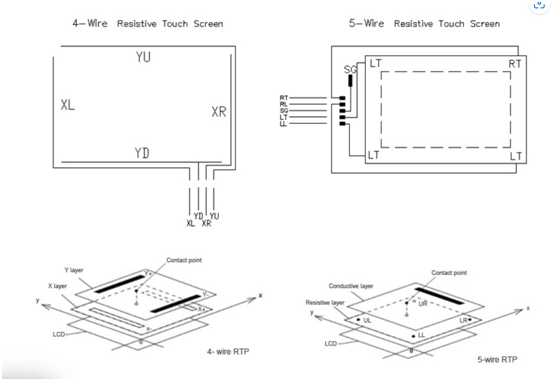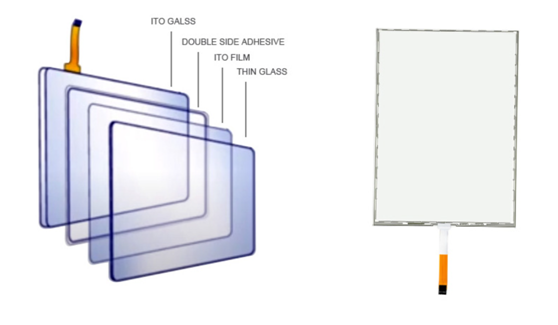Hangzhou Xuhong Technology Co.,Ltd
EN
中文
This text mainly introduces the advantages and disadvantages of RTP(resistive touch panel), as well as its several main classifications.
Advantages of RTP:
• The resistive touch panel is accurate up to the pixel level, and the maximum resolution is 4096x4096.
• The resistive touch panel is protected from dust, moisture and oil and can be used at lower or higher temperatures.
• Resistive touch panels use pressure sensing, can be touched with any object, even with gloves, and can be used for handwriting recognition.
• Resistive touch panel is relatively cheap due to its mature technology.
Disadvantages of RTP:
The resistive touch panel can usually only achieve single touch. If the design is multi-touch, when two points are pressed at the same time, the touch error occurs because the pressure on the screen is not balanced, so multi-touch is difficult to implement.
• Resistive touch panel is more likely to damage the touch function because of scratches.
Main types of RTP: 4-wire resistive touch module, 5-wire resistive touch module, G+G resistive touch module.
4-wire resistive touch panel (4-wire RTP) : it has a relative cost advantage. It has an indium tin oxide (ITO) resistance coating on the inner side of the touch layer to form the X-axis and Y-axis. Once pressure is generated, there is a change in voltage, and the coordinates of the X and Y axes are calculated by a voltage divider.
A disadvantage of the 4-wire resistive touch panel is that certain factors may cause the linearity and accuracy of this axis to decrease, including external environmental conditions and high frequency operations. Occasional recalibration may be required to maintain the precision of touch points. In addition, because the top layer material of the panel is a film, the scratches and fingerprints will be more obvious after many times of use.

The difference between 4-w RTP and 5-w RTP
5-wire resistive touch panel (5-wire RTP): Structure and design concept are similar to 4-wire RTP. The 5-wire resistive touch panel uses only the bottom layer to create the X-axis and Y-axis coordinates, which we call the resistive layer. The top layer is a pure conductive layer, which is usually coated with nickel gold, which can better prolong the life. Since the top layer is not used for any axis, this results in excellent stability, durability, sensitivity, and reliability.
Several benefits of a 5-wire resistive touch panel is that the ability to maintain a constant level of accuracy even if the top layer is damaged, and the touch response speed and accuracy are not affected by harsh environments. But obviously, it's more expensive and more difficult to produce.

G+G resistance touch panel structure diagram
G+G resistive touch module: Some resistive touch panels are used in some harsh environments, corrosive solvents and liquids can damage the ITO film material to make the failure of touch control. The resistive touch panel with G+G structure perfectly solves such application problems. Of course, its production process is more complex.
touch screen:https://www.auo-lcd.com/products/touch/
AUO LCD:https://www.auo-lcd.com/products/auo-lcd-screen/